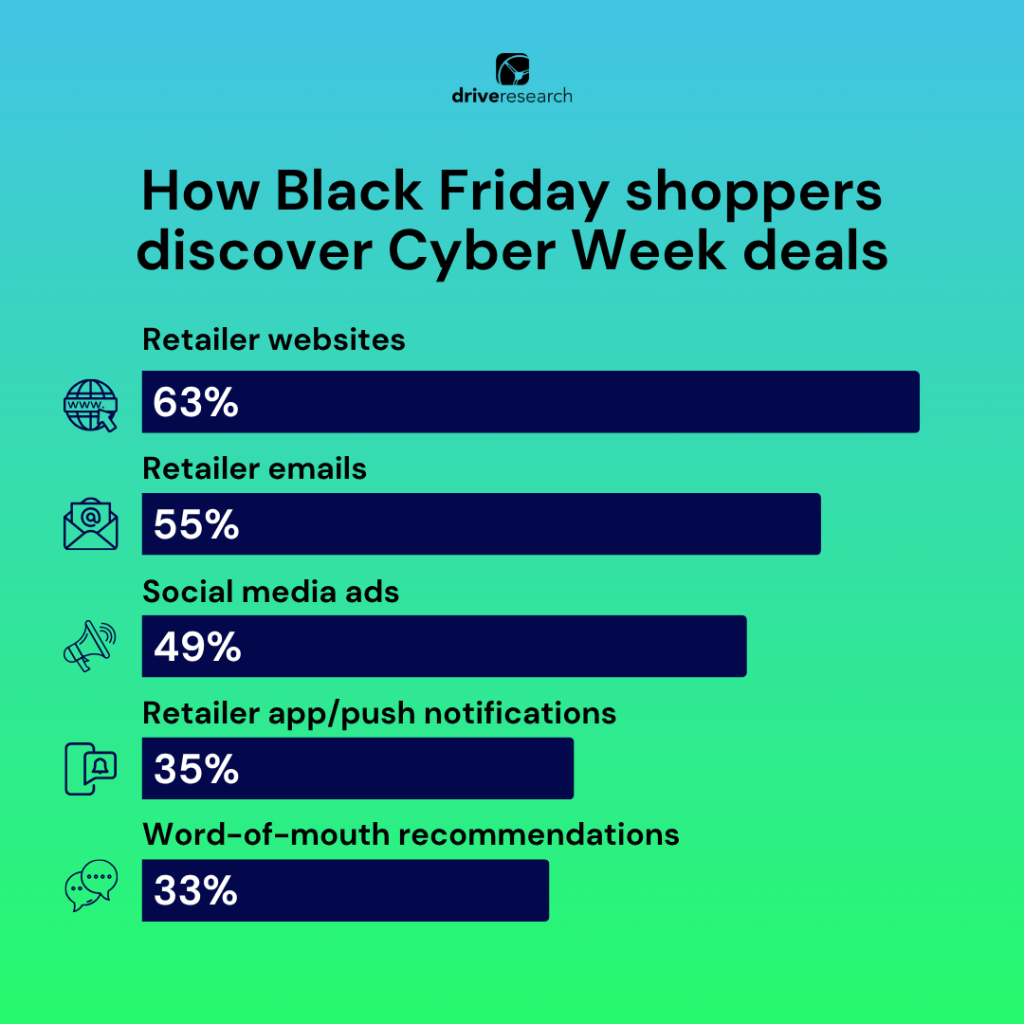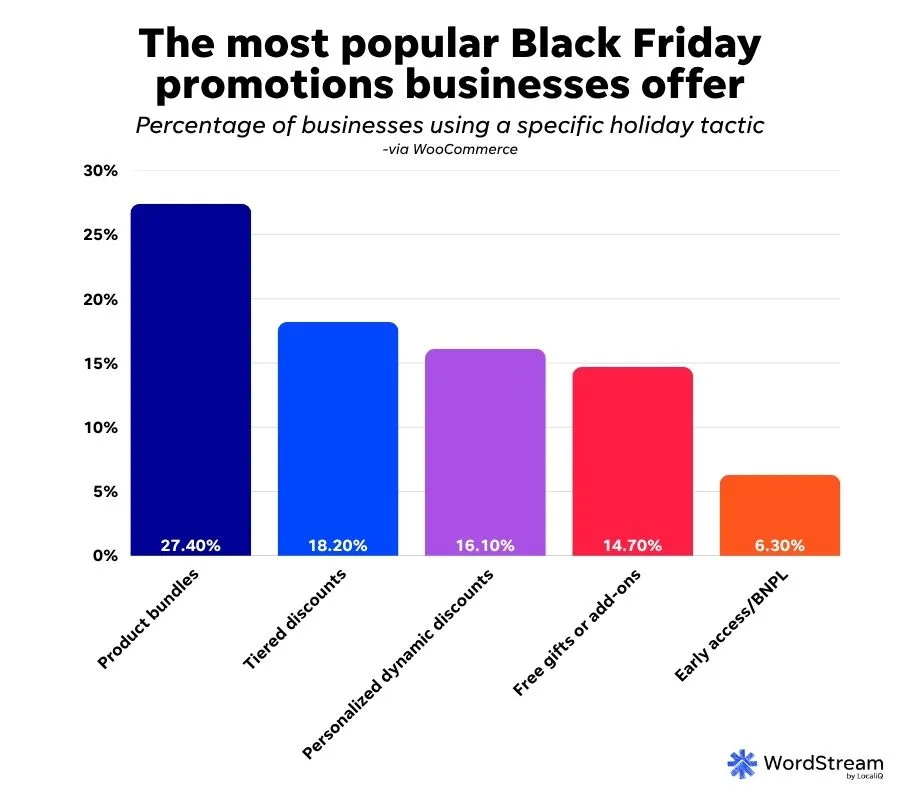
Every year, Black Friday marketing strategies evolve, and 2025 is no exception. As we move into a more mature e-commerce era, taglines like everything on sale are giving way to smarter, experience-driven, tech-enabled approaches.
It’s time we walk through the major trends shaping Black Friday marketing in 2025 and see how things have evolved, moving on from the outdated trends. What’s more interesting is how brands should reposition themselves or are already doing so to take advantage of the new trends.
Major Trends to Watch in 2025

AI & Personalization Lead the Way
Previously, Black Friday marketing leaned heavily on blanket discount campaigns, broad segmentation, and mass email blasts. Now, AI-enabled personalization and dynamic experiences are dominating -
- For example, the holiday season period in 2024 saw online sales in the U.S. hit $282 billion, with a major driver being AI-influenced shopping via chatbots and recommendation engines.
- Chatbot usage increased 42% year-on-year on Salesforce’s platform.
- In 2025, insights such as AI integration across the journey are trending.
- On the personalization front, a review of marketing data by Listrak shows apparel retailers saw revenue up 60% YoY by leaning into hyper-personalization.
Why Does This Matter?
Let’s take an example. For a B2C hair-care brand, this means the role of AI in Black Friday marketing trends 2025 isn’t just talk. Deploying AI-driven product-recommendation engines, personalized offers based on hair type, gender, and purchase history, or even chatbots for last-minute upsells will align with the Black Friday strategies 2025 that work.
Mobile & Social Commerce Dominate
Now, mobile and social commerce are front and center for Black Friday ecommerce trends compared to the once-dominating desktop and in-store trends -
- Adobe Analytics found that mobile accounted for 55% of online sales on Black Friday in the U.S., and mobile grew faster than overall e-commerce sales.
- Not just that. Mobile accounted for 57% online sales during Cyber Week in 2024.
- TikTok Shop alone drove over $100 million in sales on Black Friday in 2024, with more than 30,000 livestreams.
What's the Takeaway for Black Friday Strategies 2025?
Your strategy must assume mobile-first and integrate social commerce pathways like shoppable Instagram posts, TikTok live events, or influencer UGC to tap into what’s trending for Black Friday channel mix.
Omnichannel & Seamless Experience

Historically, Black Friday was viewed as a day of online or in-store events. Now, the shift is to continuous, integrated omnichannel Black Friday strategies 2025 -
- A 2025 e-commerce trends report by DHL eCommerce found that 87% of medium businesses will participate in Black Friday 2025. 81% of small businesses create shoppable posts on social media, and 83% of micro-businesses say free delivery and returns improve their sales.
- One survey revealed website performance optimisation overtook inventory management as the top priority for BFCM preparation.
What Does This Mean?
For your brand and other marketers, employing omnichannel touchpoints is no longer optional. Seamless handoff between channels and consistent messaging is at the heart of the latest Black Friday marketing trends 2025.
Value & Flexibility Over Depth of Discount
- 2024 data shows that 54% of retailers used the same offer as the previous year, 32% increased their offer, 14% used a lower offer. The average site-wide discount in 2024 was 29% vs 27% the prior year. listrak.com
- $686 million was spent online on Black Friday by Buy Now Pay Later in 2024.
What This Implies
Offering value-led propositions is one of the key Black Friday marketing trends for 2025 because they yield better ROI than just steep price cuts. Also, incorporate flexible payment and focus on value messaging that aligns with current best practices.
Conversational Commerce, Interactive Channels & Influencers
Instead of only email or display ads, real-time engagement via messaging apps, live streams, and influencer/UGC is emerging as a key component -
- For instance, a 2025 consumer survey found that 96% of retail leaders are using conversational commerce, and 54% of consumers prefer richer RCS messages over SMS or MMS for abandoned carts. wmca.com
- SMBs increased their use of influencers via CPA models.
Application
For your brand, leveraging WhatsApp broadcasts, live-commerce events, and influencer-led user-generated content are all part of the latest Black Friday trends.
What’s Outdated and Why?

As you plan Black Friday strategies 2025, it’s equally important to understand what’s falling out of favor -
Mass Blanket Discounts Without Segmentation
- Using one broad discount across all customers no longer cuts it. As personalization becomes table stakes, undifferentiated discounting loses impact.
- Given consumer expectations for tailored experiences and meaningful value, generic discounts no longer strongly differentiate.
Focusing Solely on the Day of Black Friday
- The single-day sale model is fading. The purchase journey is longer, and shopper behavior shows earlier research, earlier triggers, and more multi-channel participation.
- Brands that treat Black Friday as just a one-day event may miss out on earlier engagement and longer conversion windows.
Desktop-Only Optimization / Ignoring Mobile
A desktop-first mindset is outdated. Brands that haven’t fully optimized mobile UX and checkout may lag.
Ignoring Social Commerce / Influencer & UGC Engagement
- Traditional digital channels like checkbox email-blast and banner ad alone are no longer sufficient. Social commerce trends like live selling or shoppable video are now among the latest Black Friday trends. Ignoring them means falling behind.
- For instance, TikTok Shop’s livestream performance in 2024 underscores the shift.
Over-Emphasizing Deep Discounts at the Expense of Margin & Value
- Given economic headwinds and supply-chain pressures, the landscape of Black Friday ecommerce trends is increasingly about margin-protective strategies rather than margin-eroding price wars.
- Brands continuing a race to the bottom discounting strategy may find their margin squeezed and ROI compromised. This isn’t UpWork or Fiverr, where the lowest bidder gets the client.
Treating the Brick-and-Mortar Store in Isolation
With omnichannel expectations rising, treating online and in-store as separate silos is outdated. Many customers expect a seamless hand-off. For instance, buy-online-pick-up-in-store, or browse-in-store and purchase online.
Putting It Together: A Sample Strategic Framework for Black Friday Marketing Trends 2025
Here’s a simplified framework you can adapt. Use this to benchmark your brand’s plan and ensure it aligns with the major trends and avoids outdated pitfalls.
All of these could get pretty overwhelming. So, here’s a simplified framework you can follow for your brand -
How A Major Retailer Played It
Examples of how major retailers and platforms are already reflecting the Black Friday ecommerce trends -
During Black Friday 2024, TikTok Shop generated over US$100 million in U.S. sales and more than 30,000 livestreams, demonstrating how social commerce and live format align with the trends.
This is just one among many examples of how social commerce is upending all previously held notions. The social commerce market is expected to reach about $18 trillion by 2033. That is a huge opportunity to miss out on.
When thinking about Black Friday marketing trends 2025, the overarching story is smarter, not louder. It’s about leveraging AI, personalization strategies, social commerce trends, omnichannel experiences, and mobile-first design, rather than simply deeper discounts. For brands that act ahead of the curve, the opportunity is clear.
On the flip side, avoid relying on dated tactics. Your brand will be better positioned if you plan for a journey spanning weeks, across touchpoints, rather than a flash sale.
Given the data and the trends, marketers should treat Black Friday 2025 as a strategic moment, blending value, technology, and experience.
FAQs
Q1: What are the most important Black Friday marketing trends 2025?
The key trends are AI-driven personalization, mobile/social commerce dominance, omnichannel integration, value-focused promotions vs just deep discounts, and conversational commerce/interactive engagement.
Q2: How are Black Friday strategies 2025 different from previous years?
Unlike prior years, where the focus was on massive deep discounts and one-day blasts, 2025 strategies are oriented around smarter discounting, richer experiences, mobile & social commerce growth, longer purchase journeys, and tech-enabled personalization.
Q3: What mobile or social commerce metrics should marketers track for Black Friday ecommerce trends?
Track mobile share of visits and orders, livestream/viewership metrics, influencer-driven conversions, conversion rate uplift vs desktop, bounce rate changes, and product-page entry rates.
Q4: Are deep discounts still effective for Black Friday in 2025?
Data shows retailers are shifting to value bundles, BNPL options, and smarter incentives rather than solely competing on the lowest price.
Q5: How should small/midsize brands adapt Black Friday strategies 2025?
Smaller brands should lean into agility: micro-influencer campaigns, social commerce live events, personalized offers, strong mobile UX, and conversational channels. They may not have massive budgets, but they can differentiate via experience, niche targeting, and value.







.jpg)
.png)
.jpg)



